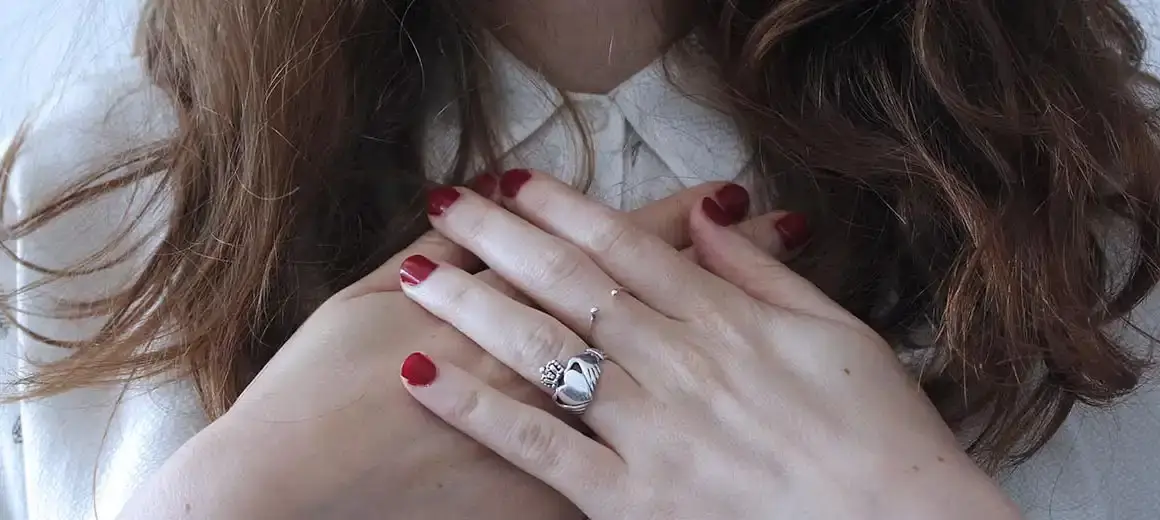Five Common Causes of Breast Pain and Tips to Manage It

- April 27, 2022
- by The Ginger-U Team
Most women experience breast pain or mastalgia at some point in their lives. Knowing the causes of mastalgia helps understand how to alleviate it and may prevent its recurrence. Read on to understand what may cause pain in breasts.
- Strenuous Exercise
A rigorous workout, including weight lifting or push-ups, impacts the pectoral muscles, which are right under the bust. Too much strain on these muscles may lead to breast pain and soreness. Applying a heating pad or taking pain relief medication should help relieve this pain. - Hormonal Ebb and Flow
Hormonal breast pain is common before periods, during the first trimester of pregnancy, and before and during menopause. It happens because of changes in the levels of estrogen and progesterone, making breasts tender, sore, and swollen. - Incorrect Bra Size
Bras that are too tight put pressure on the breast tissue, whereas loose bras are unsupportive. Underwire bras and snug bras may worsen cyclical breast pain. Conversely, loose bras require your neck and shoulder muscles and the muscles under your breast to make an extra effort to bear the weight of your breasts. The constant strain may lead to mild to severe breast pain (if you are big-bosomed) and to cervicogenic headaches. - Mastitis
Inflammation or swelling in the breast because of an infection is called mastitis. It is common in nursing women; however, it may also affect women who are not lactating. The leading cause of mastitis is milk trapped in the breast and clogging the milk duct. Alternatively, women who are not breastfeeding, especially postmenopausal women, may catch mastitis because of chronic inflammation of the ducts below the nipple. In addition to breast pain, mastitis causes fever, headache, swelling, and flu-like symptoms. - Fibrocystic breast changes
A common noncancerous breast condition, fibrocystic breast changes produces benign lumps that cause discomfort. Hormonal changes are the primary cause; therefore, PMS worsens this condition, and menopause leads to its cessation. Starting a new contraceptive or discontinuing birth control may also trigger symptoms of fibrocystic breasts, which include lumps or cysts, breast tenderness, itchy and sensitive nipples, and breasts that feel firmer or thicker than usual.
Tips To Manage Breast Pain
First, find out if your breast pain is cyclic or non-cyclic. Your gynecologist will recommend a long-term treatment plan to treat non-cyclic breast pain. On the other hand, non-steroidal anti-inflammatory drugs and hormonal medications work well for cyclical breast pain. Wearing the right-sized bra is essential to managing both types of breast pain.
Some other tips that may help relieve breast pain naturally include:
- Limiting caffeine intake before periods.
- Cutting down salt intake. Too much salt leads to water retention, which is linked to breast pain and swelling.
- Eating a high-fiber, low-sugar, and low-fat diet.
- Considering evening primrose oil; it contains polyunsaturated fatty acids, which promote breast health and relieve the symptoms of PMS and endometriosis. However, some cold-pressed oils may cause toxicity. Therefore, first check with your gynecologist if it is safe to try evening primrose oil to reduce breast pain.
- Considering Vitamin B6 and Vitamin E supplementation.
- Keeping your nipples clean and moisturized to prevent infections.
- Lowering stress and consequent inflammation.
Breast pain is common. However, you need not live with it. A few steps towards breast care are effective for breast pain management. Talk to your doctor to explore what makes sense for you.
Frequently Asked Questions
What are the most common causes of breast pain?
Common causes of breast pain include strenuous exercise affecting the pectoral muscles, hormonal changes (e.g., before periods, during pregnancy, and around menopause), wearing incorrect bra sizes, mastitis (particularly in nursing women), and fibrocystic breast changes.How can hormonal changes lead to breast pain?
Hormonal fluctuations, especially in estrogen and progesterone levels, can make breasts tender, sore, and swollen. This type of breast pain is common before menstruation, in the first trimester of pregnancy, and around menopause.Can wearing the wrong bra size cause breast pain?
Yes, wearing bras that are either too tight or too loose can lead to breast pain. Tight bras put pressure on breast tissue, while loose bras lack adequate support, causing strain on the neck, shoulders, and muscles under the breast.What is mastitis and how does it affect breast pain?
Mastitis is an infection causing inflammation or swelling in the breast. It's common in nursing women due to trapped milk in the breast, but can also occur in non-lactating women. Symptoms include breast pain, fever, headache, swelling, and flu-like symptoms.What are fibrocystic breast changes and how do they cause discomfort?
Fibrocystic breast changes are a noncancerous condition causing benign lumps that lead to discomfort. Hormonal changes often trigger these symptoms, which include tender, itchy, and firmer breasts, especially during PMS or after changes in contraceptive use.What are some effective tips to manage breast pain naturally?
To manage breast pain naturally, consider limiting caffeine and salt intake, eating a high-fiber, low-sugar, and low-fat diet, using evening primrose oil (with a doctor's approval), and taking Vitamin B6 and Vitamin E supplements. Also, keep nipples clean and moisturized, and try to lower stress levels.

Comment